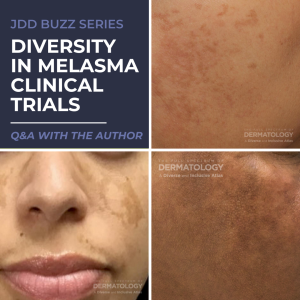
Chronic spontaneous urticaria (CSU) belongs in the dermatology wheelhouse, according to dermatologist Mona Shahriari, MD, FAAD. In a Medscape article about her Skin of Color Update session on the topic, Dr. Shahriari explains that dermatologists are better trained than allergists in differentiating CSU from other skin disorders.
While CSU is debilitating in patients no matter their skin type, Dr. Shahriari says CSU is especially impactful in patients with skin of color who often have a longer time to diagnosis. In addition, dermatology clinicians are often slower to prescribe stronger, more effective treatments in patients with skin of color as the severity of CSU is more difficult to appreciate in patients with darker skin tones.
In the article, Dr. Shahriari outlines her practical strategies for recognizing CSU and its severity, and she outlines therapies, including the recently approved remibrutinib. Dr. Shahriari recommends dermatologists have a lower threshold in prescribing targeted therapies in patients with CSU when first-line therapies have not shown to be effective.
For more on chronic spontaneous urticaria and other medical dermatology conditions, attend one of our sister conferences, the ODAC Dermatology Conference, to be held in Orlando from January 16-19. ODAC Conference Co-Chair Dr. Adam Friedman will provide a disease state update on CSU. Other ODAC sessions will address hidradenitis suppurativa, lupus and dermatomyositis, and prurigo nodularis – all conditions that are more common in patients with skin of color.









